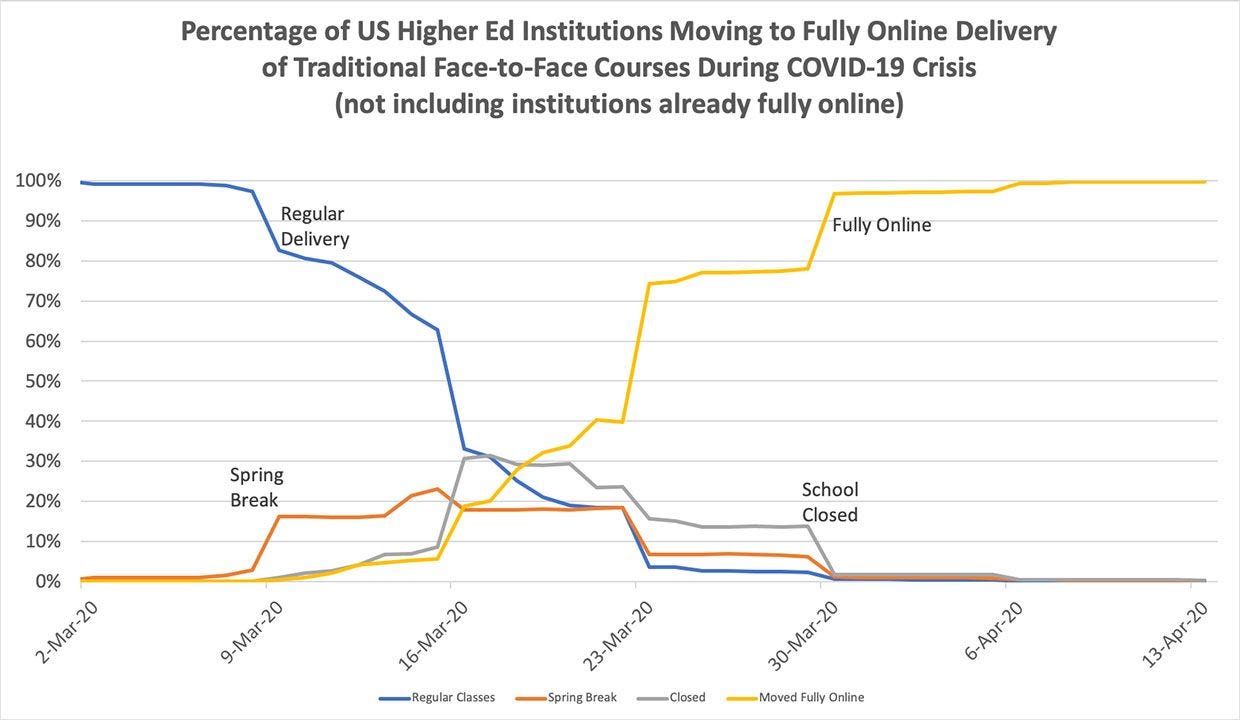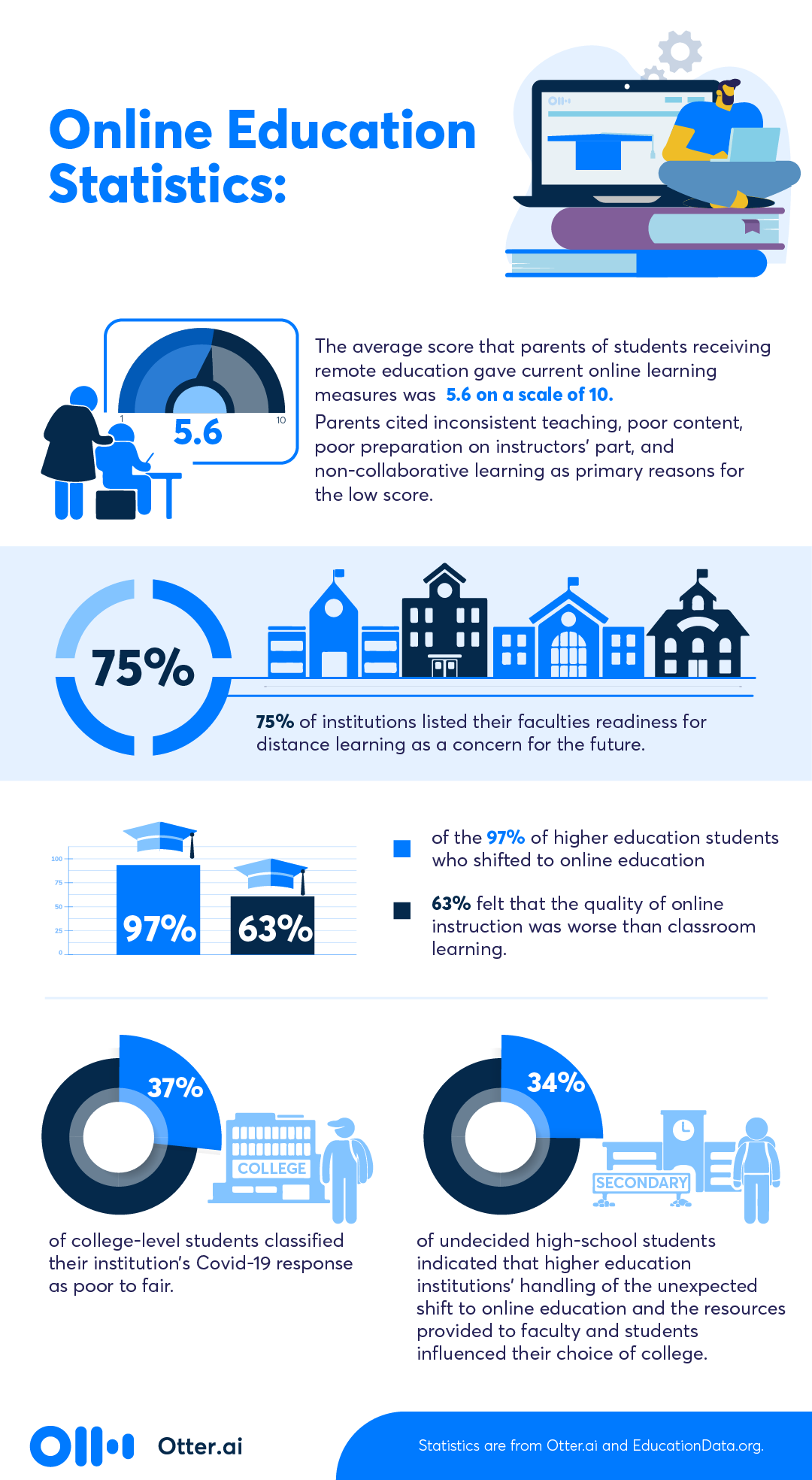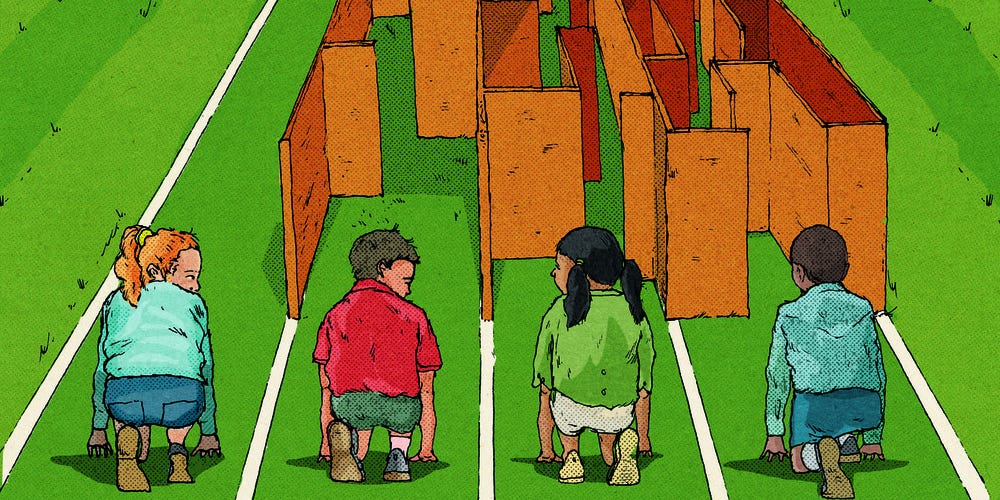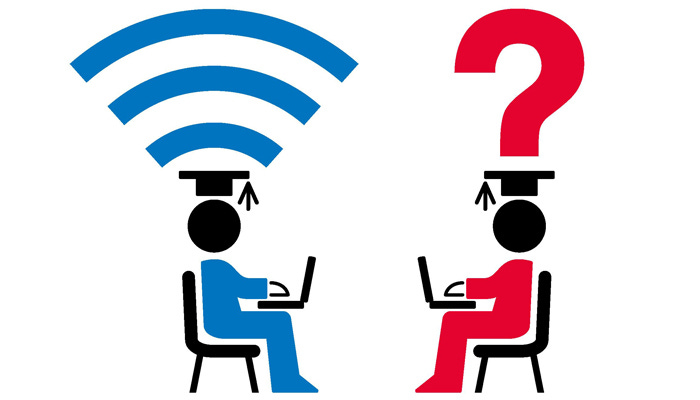One of the main discussions in the last few weeks has been the changes that ChatGPT and Generative AI will bring into education. It is a complex subject and needs a wider and more detailed discussion. This week I will pen down my thoughts on the topic as a series of blogs on it.
The current post is part one of multi-part series on The curious case of online learning that we will cover this week. Part one was originally published on substack.
The curious case of online learning-I
Nearly 1.6 billion learners in the world have been affected by the COVID-19 pandemic, the largest disruption of educational systems in history. More than 94% of the world's student population has been impacted by the closure of schools, institutions, and other learning spaces, and the world has witnessed the biggest experiment in human history, taking education online almost overnight!
Suddenly, everyone, from school students to corporate employees, was told to download Zoom, Teams, and various other tools and start a new kind of learning.

In response to the uncertainty, those who believed "Every crisis presents an opportunity" launched new products, and startups, and invested in anything that combines education and technology.
The 1.5 years of optimism, opportunism, and anxiety make one realize that this new type of learning somehow does not work.
“Online education doesn’t work.”

Why does it look as if online learning is failing?
The lure of distance education lies in its promise of offering students a high-quality education at a relatively low cost. Online learning has the potential to give students access to the best teachers, the best content, and the best learning resources. It has the potential to reach students who otherwise do not have access to high-quality education. It has the potential to increase the effectiveness with which educational resources are used. And, of course, it has the potential to reduce costs. Whereas a global shift to online learning has boosted enrolments, many students are not finishing courses, and those who do finish aren't necessarily learning anything.
The case of widening inequality
Globally, the consequences of the Covid-19 pandemic are serious and far-reaching. The pandemic is a social and economic crisis just as much as it is an education crisis. There are a wide variety of social and economic costs associated with the pandemic, from devastated industries and millions of lost jobs to school closures and learning loss. COVID-19 had widened inequality throughout the world, and undermined progress on global poverty and clean energy, among other things.
Schools around the world closed to slow the spread of the virus. Almost half of the children in the world have been affected by the pandemic since it began. Millions of girls in some countries may not return to school at all, putting them at risk of adolescent pregnancy, child marriage, and violence.
The pandemic has forced thousands of Indian schools to close since March 2020. The country has more than 260 million students. Azim Premji Foundation published a study in 2021 based on an assessment of 16,607 children which showed that a majority of children have forgotten foundational abilities in mathematics and over 92 per cent have forgotten fundamental abilities in language, which they knew in March 2020.
The situation is no different in other parts of the world. As a "best-case" scenario, the Netherlands offers a short lockdown, equitable school funding, and high broadband access rates. In spite of favourable conditions, students made little or no progress while learning from home. Students from disadvantaged backgrounds showed the greatest loss of learning.
The other adverse consequences of school closure include Interrupted learning, Poor nutrition, Confusion and stress for teachers, Parents unprepared for distance and homeschooling, Gaps in childcare, Unintended strain on healthcare systems, Rise in dropout rates and Challenges measuring and validating learning among others.
There are two reasons why online learning is ineffective. For one thing, most children don't have access to online learning. Furthermore, the inherent nature of children's learning makes online learning ineffective.
The case of learning loss
The pandemic has been a giant educational experiment for the children of the world; we have switched billions of children overnight to this other method of learning. Only then do we realize that it hasn't worked.
Through various online platforms, educators are delivering quality education in a new paradigm. Distance education, online learning, and continuing education have become panaceas for this unprecedented global pandemic, despite the challenges they pose to educators and learners alike. The transition from traditional learning to online learning can be a completely different experience for learners and educators, to which they must adapt with few or no alternatives. Through various online platforms, the education system and educators have adopted "Education in Emergency" and are forced to adopt a system they are unprepared for.
In the case of the Netherlands, the research mentioned above, learning loss of about 3 percentile points or 0.08 standard deviations. The effect is equivalent to one-fifth of a school year, the same period that schools remained closed. Losses are up to 60% larger among students from less-educated homes, confirming worries about the uneven toll of the pandemic on children and families.
The case of online platforms: Education in Emergency
Except for coding and programming, it's hard to think of a learning module that's better online than in-person, but is online a panacea?
In an emergency situation, we saw online education as the solution but did not realize that the problem was rather the lack of alternatives. Those who are more creative assume that zoom classes combined with Augmented Reality and Virtual Reality will help a child receive a better education than we had before. With the technology-can-solve-everything mantra taking hold, one tends to forget the role schools play beyond education.

Educating children in emergencies is more than just their right to learn.
In schools, children are protected from physical dangers - including abuse, exploitation and becoming criminals. Schools provide children with life-saving food, water, health care, and hygiene supplies. Moreover, they offer psychosocial support, helping children cope with the trauma they experience every day.
Education is a top priority for parents and children affected by crises. When children are educated, entire communities benefit.
Case of the type of platform
"Innovation" in EdTech has mostly been focused on the following three themes in the last year:
- Online Classes
- Virtual Classroom
- Learning on Chatbots
Despite the fact that all three approaches were able to ensure that "the show must go on," they all fail to meet the requirements for effective and even equitable education.
Effective education needs:
accessibility:
- Content:
The availability of content is a key component of effective education. However, it is not the only requirement. Edtech has solved this problem by making content available online. In other cases, the less said, the better. Despite this, the rush of ed-tech startups paints a bleak picture.
- Teacher:
The ones who were able to access teachers through online mediums, the teachers were struggling to learn and adapt to online ways of education. No amount of the hype of advances in technology was able to come to the rescue of teachers' training or replace them with better alternatives, leaving students to themselves.
Doubt-clearing (answers to learner’s questions):

The presence of teachers and classmates around students helps them clear up their doubts and answer their queries more quickly. This helps students stay motivated and curious throughout their education. So far, no satisfying technology that helps students to answer they're curious questions and resolve their doubts has been seen to be playing at scale. It's also at the same time that lots of chatbots are getting funded.
- affordability: A substantial portion of the world cannot afford online platforms. As internet costs rise, the need for streaming or video is adding a barrier to affordable education, one that was previously offered in schools by the government. It remains to be seen whether online education will be able to replace affordable school infrastructure built by the state over years, ensuring a level playing field for the haves and have-nots to compete on merit.
- flexibility: The education system should be flexible enough to meet the needs of all learners. For example, some students learn through reading, while others learn through conversation. As of now, online education consists of videos, text, and the occasional podcast, which leaves a lot to be desired.
The case of missed opportunity
“We choose to go to the moon in this decade and do the other things, not because they are easy, but because they are hard, because that goal will serve to organise and measure the best of our energies and skills, because that challenge is one that we are willing to accept, one we are unwilling to postpone, and one which we intend to win.” ―John F. Kennedy
The pandemic presented the state, intelligentsia and public with an opportunity to change education forever. The innovative thought process, investment in deep technologies around education and will to rise up to the challenge would have given us the moon landing moment in education in less than a decade. Whereas private investment has been poured into EdTech but most of the investment is driven by existing demands and existing solutions. Very few startups are trying to break the mould and sadly the conversation around this is grossly missing.
The pandemic has been a true missed opportunity, and the next generation will ask why this one didn't do enough when presented with the opportunity.
There is no quantification or assessment that can be done to ascertain the amount of curiosity that the world has lost during the pandemic. In its current form, the alternative classroom method implemented during the pandemic will haunt us for decades to come. This loss has destroyed many future leaders and many social skills for a generation, not to mention that this is one of the losses that are difficult to measure.
References:
- https://www.oecd.org/coronavirus/policy-responses/strengthening-online-learning-when-schools-are-closed-the-role-of-families-and-teachers-in-supporting-students-during-the-covid-19-crisis-c4ecba6c/
- https://journals.sagepub.com/doi/full/10.1177/2347631120983481
- https://www.nytimes.com/2018/01/19/business/online-courses-are-harming-the-students-who-need-the-most-help.html
- https://tytonpartners.com/library/beyond-the-noise-covid-19s-impact-on-course-completion-rates-will-widen-equity-gaps/
- https://www.mckinsey.com/industries/public-and-social-sector/our-insights/covid-19-and-student-learning-in-the-united-states-the-hurt-could-last-a-lifetime
- https://www.moneycontrol.com/news/india/online-learning-is-ineffective-for-all-children-azim-premji-foundations-anurag-behar-7419521.html
- https://www.pnas.org/content/118/17/e2022376118
- https://en.unesco.org/covid19/educationresponse/consequences
We research, curate and publish daily updates from the field of AI.
Consider becoming a paying subscriber to get the latest!









